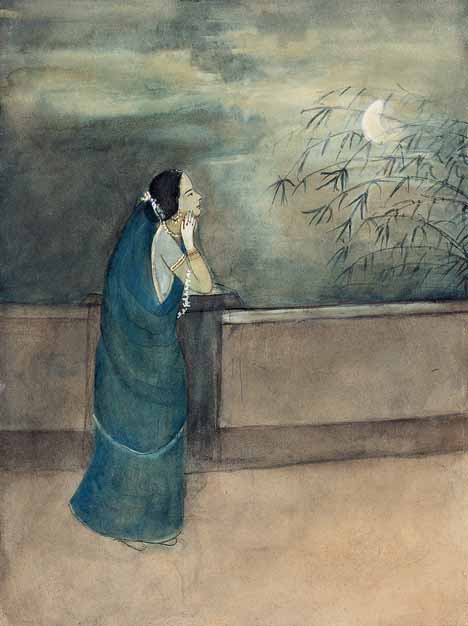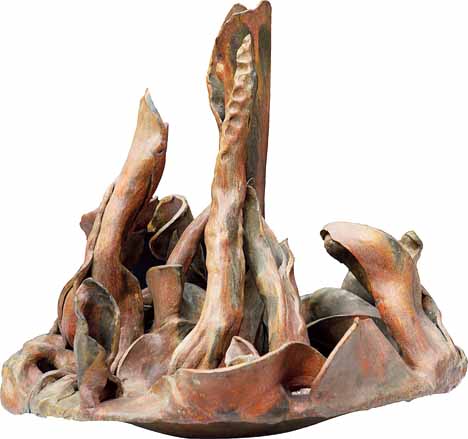Focusing on the contested issue of “the gaze” and facilitating a discourse around it is DAG with its Ways of Seeing exhibit that can be viewed physically at The Claridges in Delhi and also virtually till March 7. With the impressive breadth of the exhibit encompassing over 150 works, the showcase is divided into two parts that examine the gaze that women are subjected to from both sides of the field — as makers and as muses.
The division titled Women Artists features the works of 22 female artists, including Amrita Sher-Gil, Mrinalini Mukherjee, Sunayani Devi and Rekha Rodwittiya and takes into account the “humanitarianism” of the gaze, thereby not restricting it to only the female body. The second division titled Women as Muse features the works of 32 artists including those of Nandalal Bose, Jamini Roy, F. N Souza and M. F. Husain and solely focuses on women being the subject of their art.

Sunayani Devi, Untitled, Water colour and ink on paper: Painted in the Bengali art style propagated by the likes of Abanindranath Tagore and Gaganendranath Tagore, this untitled painting shows a woman wistfully gazing at the moon as she awaits her lover. The objects and attire of the subject are reminiscent of all things Bengal. Sourced by the correspondent
“For the making of this exhibition, DAG looked at two aspects that define the gaze. Women artists, their examinations of their own bodies, and the territories of art they occupy would have remained incomplete without the male artists and their surveillance of the female body. It was necessary to confine the work of these artists with reference to women, suggesting a skew that does not necessarily denote their wider canvas of work, or view, but was essential to establish the confrontation between the male gaze and the female gaze as real — and evident,” said Ashish Anand, DAG CEO and managing director.

Mrinalini Mukherjee, Florescence 2, Ceramic, 1996: Her usual context of the natural world of flora ripened by sexual connotations finds place in this work made of ceramic, which she used as a medium later in her career.
With artworks paralleling the modern art movement in India, the show has been curated in order to examine notions of “scopophilia” from the perspectives of both female and male artists as they make and enjoy art. Thus the female nude — and even the male nude — are juxtaposed from the purview of male and female artists and how they go about creating their own narrative within their art, which are distinctly different. While a few romanticise and sexualise the body, some turn it into a literal and metaphoric canvas for their feminist perspective.
Ways of Seeing can be viewed virtually on www.dagworld.com.











